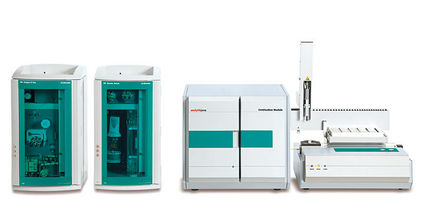To use all functions of this page, please activate cookies in your browser.
my.chemeurope.com
With an accout for my.chemeurope.com you can always see everything at a glance – and you can configure your own website and individual newsletter.
- My watch list
- My saved searches
- My saved topics
- My newsletter
Convolvulus arvensis
Convolvulus arvensis (Field Bindweed) is a species of bindweed, native to Europe and Asia. It is a climbing or creeping herbaceous perennial plant growing to 0.5-2 m high. The leaves are spirally arranged, linear to arrowhead-shaped, 2-5 cm long, with a 1-3 cm petiole. The flowers are trumpet-shaped, 1-2.5 cm diameter, white or pale pink, with five slightly darker pink radial stripes. There are two varieties:
Product highlightAlthough it produces attractive flowers, it is often unwelcome in gardens as a nuisance weed due to its rapid growth and choking of cultivated plants. It has been introduced to North America, where it is an invasive species in some areas. Very common in Pakistan and it is called Leli in Punjabi. Other common names, mostly obsolete, include lesser bindweed, European bindweed, perennial morning glory, smallflowered morning glory, creeping jenny, and possession vine. In one of the tales collected by Jacob and Wilhelm Grimm, Our Lady's Little Glass, this flower is used by Our Lady to drink wine with when she helps free a wagoner's cart. The story goes on to say that "the little flower is still always called Our Lady's Little Glass." References
|
||||||||||||||||||||
| This article is licensed under the GNU Free Documentation License. It uses material from the Wikipedia article "Convolvulus_arvensis". A list of authors is available in Wikipedia. |







